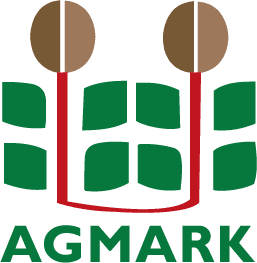On February 28, 2025, AGMARK launched its groundbreaking project at the Villa Rosa Kempinski in Nairobi, setting a transformative tone for structured cross-border grain trade in the ESA region. This high-profile launch event, organized in partnership with AGRA, brought together government officials, regional organizations, cross-border trader associations (CBTAs), and private sector leaders. The primary focus was to empower women and youth by enhancing their participation in the grain trade, creating new opportunities and fostering sustainable economic growth across the region.
Workshop Objectives
The workshop was designed with clear goals in mind:
- Introducing the Project: The project, titled “Empowering Women and Youth to Participate in Structured Cross-Border Grain Trade through CBTAs in ESA Regions” aims to boost the institutional and trade capacities of CBTAs. This enhancement will not only facilitate effective participation in grain trade but also create new job opportunities.
- Engaging Stakeholders: A key objective was to foster a collaborative environment where governments, regional bodies, and the private sector work together toward a shared vision of an inclusive trade landscape.
- Presenting Key Findings and Recommendations: Insights from the institutional capacity assessment of CBTAs were shared, setting the stage for actionable strategies.
- Officially Launching the Project: The formal project launch was marked by an inspiring address from the guest of honor, signaling the commencement of a transformative journey.
Workshop Outcomes
The event achieved several critical outcomes:
- Enhanced Awareness and Collaboration: Stakeholders left with a deeper understanding of the project’s goals and the pivotal role of CBTAs in structured grain trade.
- Alignment on Actionable Strategies:There was a unanimous agreement on practical solutions to empower women and youth, ranging from capacity-building initiatives to improved financial inclusion.
- Identification of a Capacity Building Pathway: Priority activities were outlined to ensure that CBTAs are well-equipped to navigate and thrive in cross-border trade environments.
Voices of Leadership
Guest of Honour – Ms. Pamela Betty Awuor
In her address, Ms. Awuor highlighted the indispensable role of structured cross-border grain trade in bolstering economic empowerment and food security. She stressed the need for comprehensive capacity-building programs, robust policy support, and improved access to financing, all of which are crucial for overcoming trade barriers. Her call for sustained collaborative partnerships underscored the long-term vision of the project.
Remarks by AGRA – Isaac Gokah
Isaac Gokah reaffirmed AGRA’s commitment to creating inclusive agricultural markets. He pointed out that the project embodies a shared vision of strengthening trade facilitation and building resilient institutional capacities. By empowering small-scale traders—especially women and youth—AGRA aims to open structured markets, reduce trade barriers, and drive sustainable growth in the agricultural sector.
Panel Discussion Highlights
An interactive panel discussion brought together key representatives from entities such as the Kenya Revenue Authority, various farmer organizations, ThriveAgric, and CBTA-Zambia. The discussion shed light on several pressing issues:
- Policy Harmonization: The need for synchronized policies to streamline cross-border trade processes.
- Financial Inclusion: Strategies to enhance access to credit for small-scale traders.
- Capacity Building: Initiatives to improve business acumen, digital literacy, and market access. Strengthening CBTAs: Enhancing the role of CBTAs as advocates and supporters of their members.
The official launch of this innovative project marks a significant step toward transforming the agricultural trade landscape in the Eastern and Southern Africa region. By focusing on capacity building and fostering strategic partnerships, the initiative is poised to create inclusive markets, empower women and youth, and drive economic resilience. As the project unfolds, it promises to not only bridge trade gaps but also set a precedent for sustainable and equitable growth in the region.
